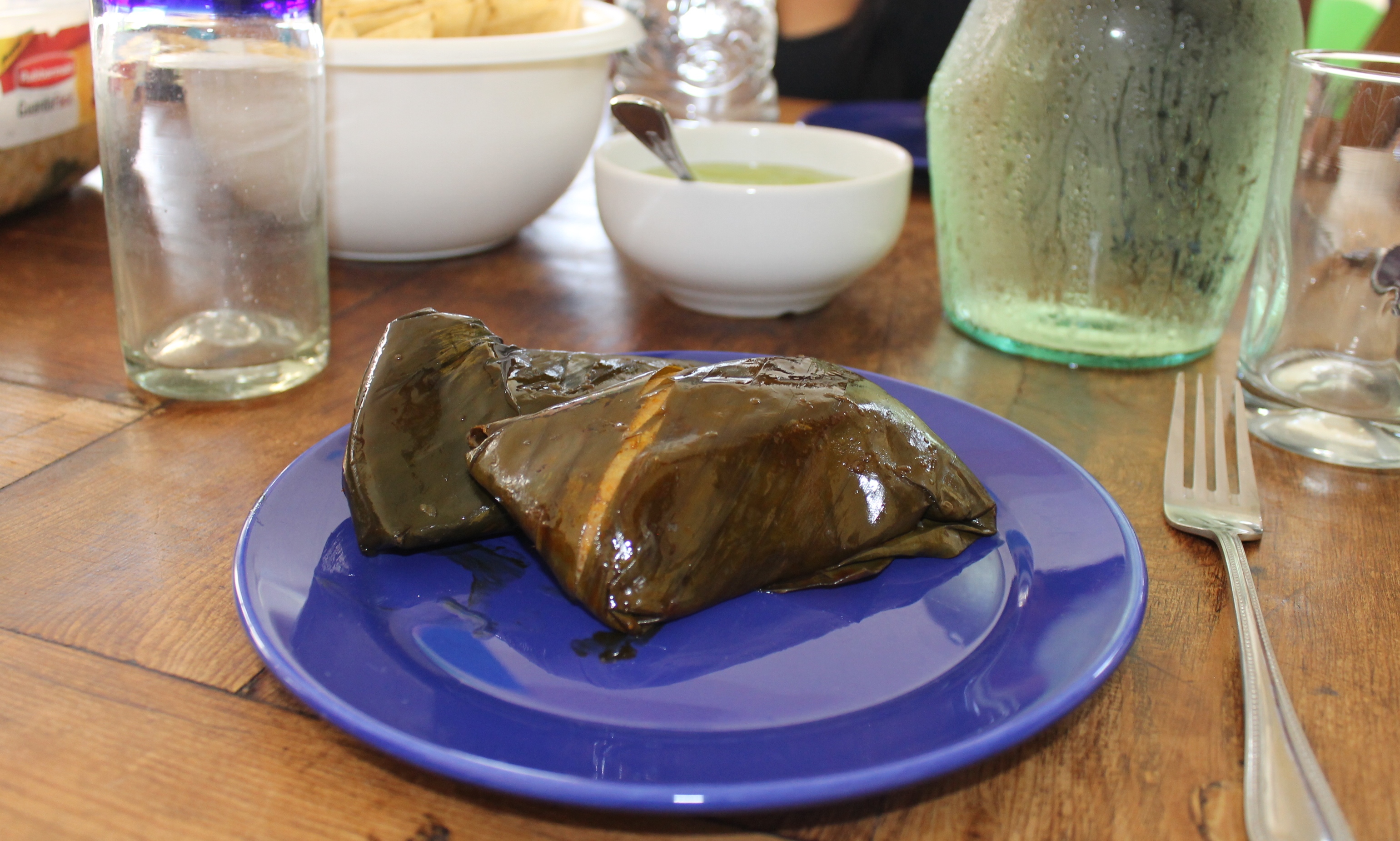I turned 30 the other day, and a fellow teacher at school, a Mexican, gave me two tamales since it was my birthday. They were savory, salty, substantial, succulent and very Mexican. And they got me to thinking about tamales.
So this is what a tamal (pronounced: /tah/ /mahl/) is. It is about a handful of wet corn meal mixture called “masa” (/mah/ /sah/). As best I can tell it’s mashed out into a thick patty and then the filling of the tamal is layed on. They can be filled with beans, cheese, chicken, pork, iguana, vegetables or any combination of these things or other delicacies. Then the masa is folded over the filling and the whole thing is wrapped tightly in a banana leaf. This is one tamal. A bunch of these are “tamales” (/tah/ /mah/ /less/). They can also sometimes before the leaf is wrapped on be covered in salsa or mole. Mole is like a really dark, rich, thick, spicy, sweet, salty, gravy type sauce. So there are mole tamales and verde tamales. The verde tamales are covered inside and out with green salsa. They can be so hot and spicy that your nose runs the second it hits your tongue and your eyeballs melt. Or they can be so mild that you could eat 100 of them.
Eating a tamal is very messy. At least, for me it is. You have to lay it down, unwrap the leaf and consume the wet, whimsical and saucy food item. You can use your fingers or a fork. I use a fork. You leave the tamal laying in the leaf while you eat it. When I eat this treat I have sauce on my fingers, elbows, face, nose and hair. Don’t ask me how. I always set out to be as clean as possible but by the second bite, I am ruined so I just abandon caution and devour. For a Mexican, eating a tamal is not messy. A Mexican person will eat a tamal and you will never know that they have done so from looking at them. They deftly unwrap it, efficiently eat it, and quickly dispatch the remaining banana leaf.
Mexican women make tamales in their houses and sell them in a word-of-mouth unofficial, casual small business venture. They sell them on street corners out of big basins covered in a towel. They are sold at counters in the markets where people sit on stools and eat them. Other señoras carry them in buckets in their hand or in tubs on their head and walk around neighborhoods calling, “¡Tamales! ¡Verde, de mole, de chepil!”.
But tamales are not just common. They are also special. And this, to me, is the most intriguing characteristic of the tamal. It is both normal and extraordinary. Mundane and celebratory. Boring and exciting. Purchased on a corner and ingested instantly while you wait for a bus that is about to take you to Oaxaca city. Ordered in quantities of hundreds two weeks in advance and presented to relatives in a backyard on Christmas Eve. They are prepared and served and gifted in mass when babies are born, at funerals, at Christmas, on birthdays, and at weddings. Hence, I was given tamales on my birthday. And they were very good.
Tamales are a lot like Mexico. On the surface, they are very simple, not special, unremarkable, easy to understand. But these visible qualities are only a curtain behind which the true nature and essence of the thing is hidden. At a glance, it is just this weird thing people eat in a few minutes when they have a break from working. But through your friends you find out that they are revered as something to be hoped for and anxiously awaited once a year. They are just tamales. It is just Mexico, the country that borders the United States to the South. Illegal immigrants. Cartels. Violence. Donkeys. Roosters. Sombreros. Belt buckles. Moustaches. Music with lots of brass. Tacos. But pull back the curtain and behold a Grand Canyon of complexity. People that would rather die themselves than see a child in discomfort. True believers in Jesus with earnestness to their faith distinct from many Americans. Daily practices that are unintelligible to Americans but have a perfectly sound, valid and vital purpose in the lives of Mexicans. Behaviors that have their origins in cultures older than the United States.
I like tamales.
-Faircloth
 Jason Faircloth currently teaches 2nd grade at the Manantial School in Puerto Escondido. Jason and his wife, Kate, and son, Abraham, have lived in Puerto Escondido for almost 3 years now serving with Global Education Ministries. You will typically find Jason with a coke and bag of Frito’s in hand.
Jason Faircloth currently teaches 2nd grade at the Manantial School in Puerto Escondido. Jason and his wife, Kate, and son, Abraham, have lived in Puerto Escondido for almost 3 years now serving with Global Education Ministries. You will typically find Jason with a coke and bag of Frito’s in hand.

